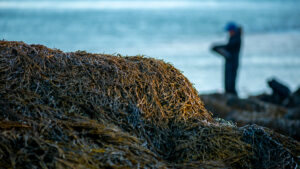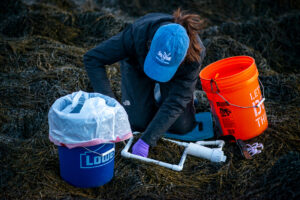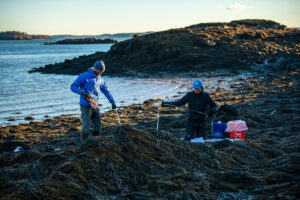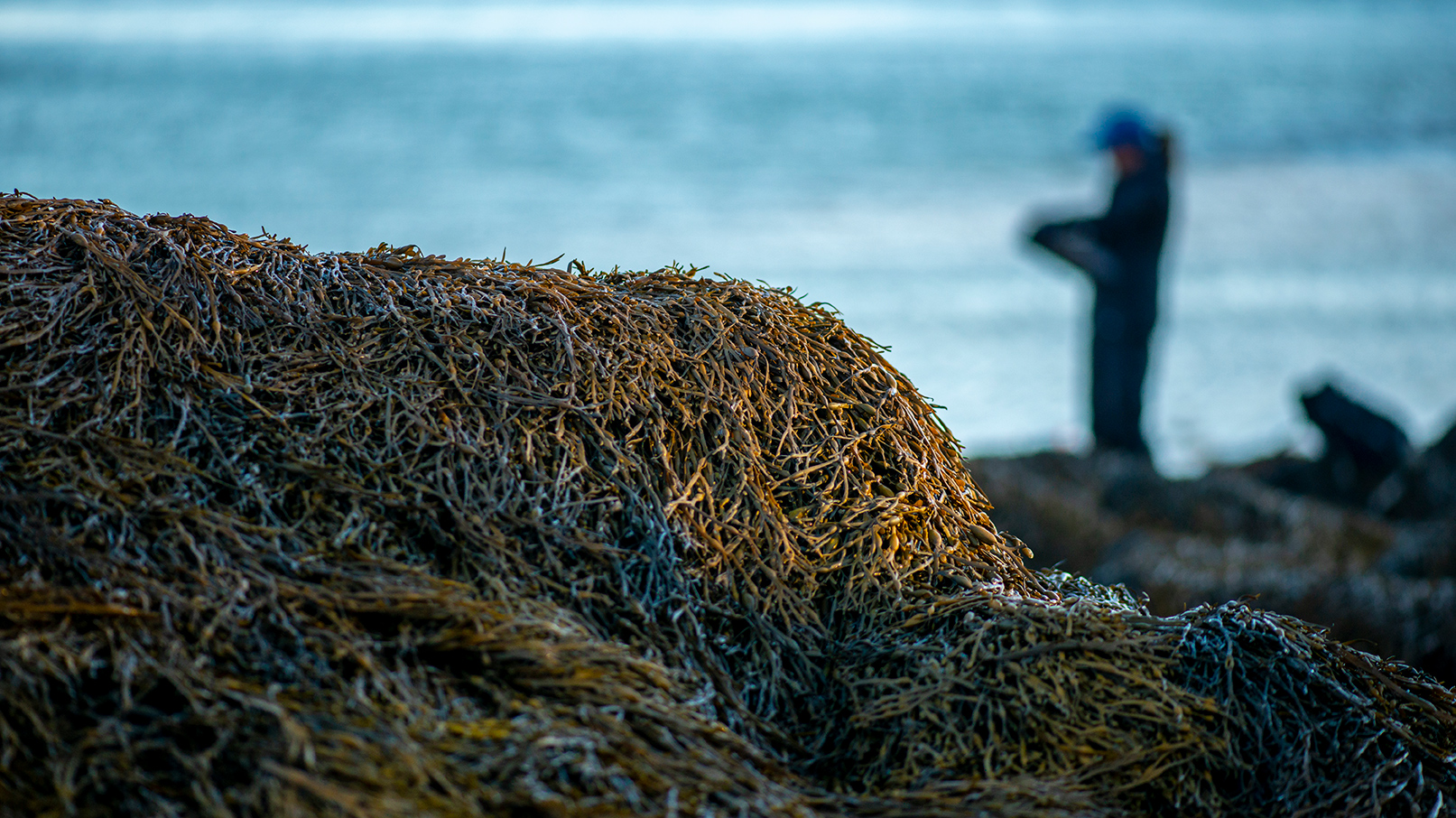
Science to help achieve intersecting goals of a fishery and coastal wildlife
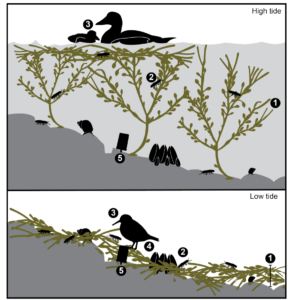
by Abigail Muscat
On a chilly October morning, I rose before the sun and was filled with the excitement of what the day would bring. I was a month into my first year at the University of Maine studying Marine Science and had the amazing opportunity to get my feet wet, literally and figuratively, and experience what it was like conducting fieldwork for a Maine Sea Grant funded project! After my morning class, I layered up with a sweater, jeans, wool socks, and L.L. Bean boots. I made my way over to meet up with Hannah Mittelstaedt and Elliot Johnston, two graduate students working on this project spearheaded by Amanda Klemmer (Principal Investigator, University of Maine), Brian Olsen (Co-Principal Investigator, UMaine), Jessica Muhlin (Co-Principal Investigator, Maine Maritime Academy), and Hannah Webber (Associate Investigator, Schoodic Institute, UMaine PhD student).
Once we arrived at the field site in Harborside, Maine, I placed quadrats along a transect line that was nestled in the beds of rockweed. Next, I began measuring the blades and counting the number of holdfasts. Our goal was to document the growth of the rockweed, collect sediment and rockweed samples for invertebrate studies, and to study the interactions between various bird species and rockweed in order to understand the possible impacts rockweed harvesting may have on these species. After the first few quadrats, I felt confident and was able to fully enjoy the beauty of the area – from the sunlight glistening off the top of the sea to the crabs scurrying along the rocks. I felt right in my element.
Little did I know at the time that this opportunity would result in me gaining valuable lab experience in addition to the field experience I had already received! Over the course of my first semester, I assisted with sieving and preserving rockweed and sediment samples. After returning from winter break, I began the process of sorting each tiny invertebrate contained in the samples. From isopods to annelids, my mind was filled with all the possibilities of what I might discover through the lens of the microscope. While this was a difficult task at times, particularly when the samples contained hundreds, and I mean hundreds, of amphipods or bryozoans, it was rewarding to know that the work I was doing would contribute to the understanding of our local intertidal ecosystems and the Maine seaweed industry.
Now, as I start my second year at the University of Maine and continue the process of sorting, and soon identifying the invertebrates, I look back and am immensely grateful for this opportunity to develop my skills and learn more about the issues that are pertinent to the Maine coast — a place that I am happy to call home.
Related research: R-18-02 Reconciling multiple stakeholders in rockweed habitats: Science to help achieve the intersecting goals of a fishery and coastal wildlife
- Rockweed (Ascophyllum nodosum.)
- Hannah Mittelstaedt collecting rockweed samples and measurements.
- Hannah Mittelstaedt and Elliot Johnston, graduate students at the University of Maine measuring transects in Lubec, Maine.

